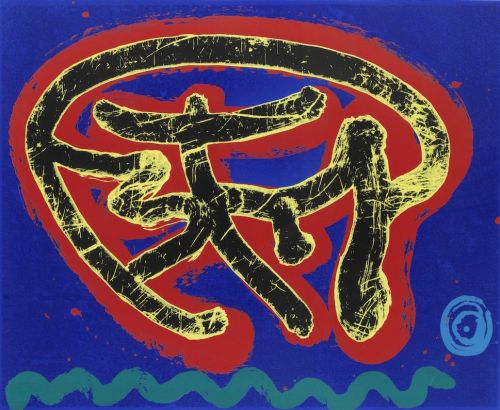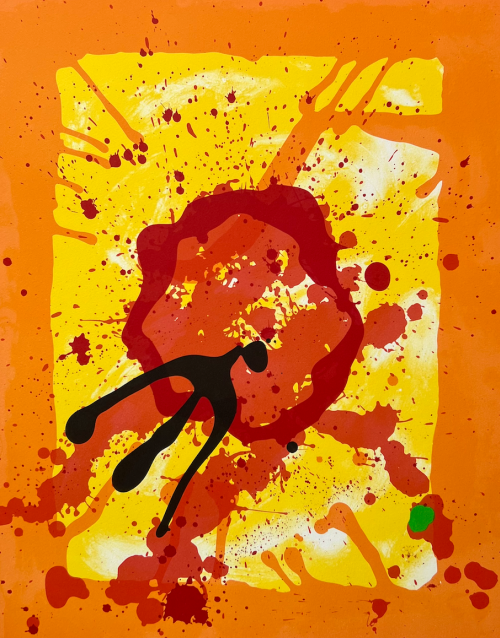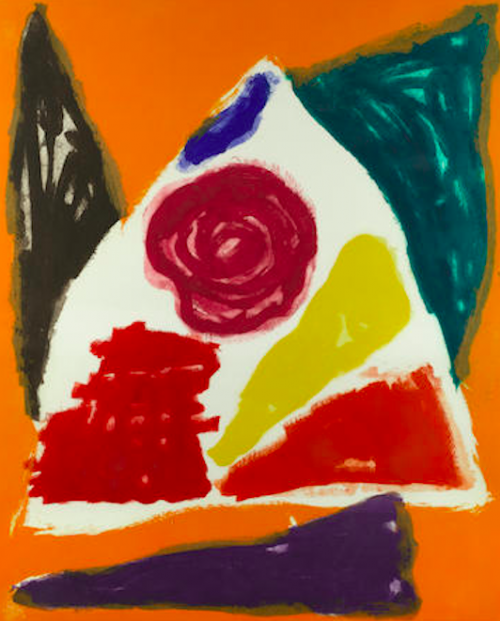About the artist:
British artist, one of Britain's leading abstract painters.
John Hoyland studied at Sheffield College of Art from 1951 to 1956, and at the Royal Academy Schools between
1956-1960. His Diploma presentation in 1960 consisted entirely of abstract paintings and at the same year he
appeared in the pioneering Situation exhibition at the RBA Galleries, London, the first show to present large-scale
abstract paintings by British artists.
Hoyland's art uses shape, colour and, later, texture and the movement of paint to evoke a world of emotion and
imagination.
In 1961 the Whitechapel Gallery held an exhibition on Mark Rothko which had a profound affect on Hoyland. The
carefully constructed abstract paintings from the Situation exhibitions were soon to give way to a more sinuous
and organic style of painting with a strong use of colour. Hoyland was fortunate enough to win the support of the
curator at the Whitechapel Gallery, Bryan Robertson, who included Hoyland's paintings in the successful
exhibition The New Generation in 1964. He also helped Hoyland win a travel bursary to New York where artist
met and visited the studios of American artists: Robert Motherwell, Helen Frankenthaler, Barnett Newman, Mark
Rothko and Hans Hoffmann whose work affected Hoyland profoundly. He was inspired by elements from these
American developments, especially from colour field painting and post-painterly abstraction, feature prominently
in subsequent canvases by Hoyland in the use of staining techniques and acrylic paint, the interaction of unmixed
colours, and an emphasis on the material weight of paint. Hoyland's work of this period was characterised by
simple shapes, high-key colour and a flat picture surface.
In 1967, artist had a solo exhibition at the Whitechapel Gallery and two years later represented the United
Kingdom with British sculptor Anthony Caro, at the 1969 Sao Paulo Beinnale.
During the 1970s, Hoyland produced paintings which are thickly painted and richly textural, insistently abstract,
these works possess an extraordinary material physicality.
Since the 1980’s, his paintings have developed far beyond their early formal emphasis, suggesting mysterious
other worlds.
Art critic Andrew Lambirth wrote that Hoyland’s paintings were "abstracts but they are not about absolutes. They
are about... very particular emotions, thoughts and feelings dependent upon the act of looking."
Damien Hirst, who has called Hoyland "by far the greatest British abstract painter", says: "In my eyes, John
Hoyland was an artist who was never afraid to push the boundaries. His paintings always feel like a massive
celebration of life to me."
Throughout his lifetime, Hoyland won many awards including the prestigious John Moores Painting Prize in 1982
and the Wollaston Award in 1998 for the most distinguished work in the Royal Academy Summer Exhibition.
As well as his exhibitions at Whitechapel Gallery and the Serpentine, his work has been the subject of major
retrospectives at the Royal Academy of Arts (1999) and Tate St Ives (2006).
Artworks by John Hoyland are held in many private and museum collections including the Tate, LACMA, Los
Angeles, MoMA, New York, Royal Academy of Arts, London, Kiasma Museum of Contemporary Art, Helsinki,
among others.






